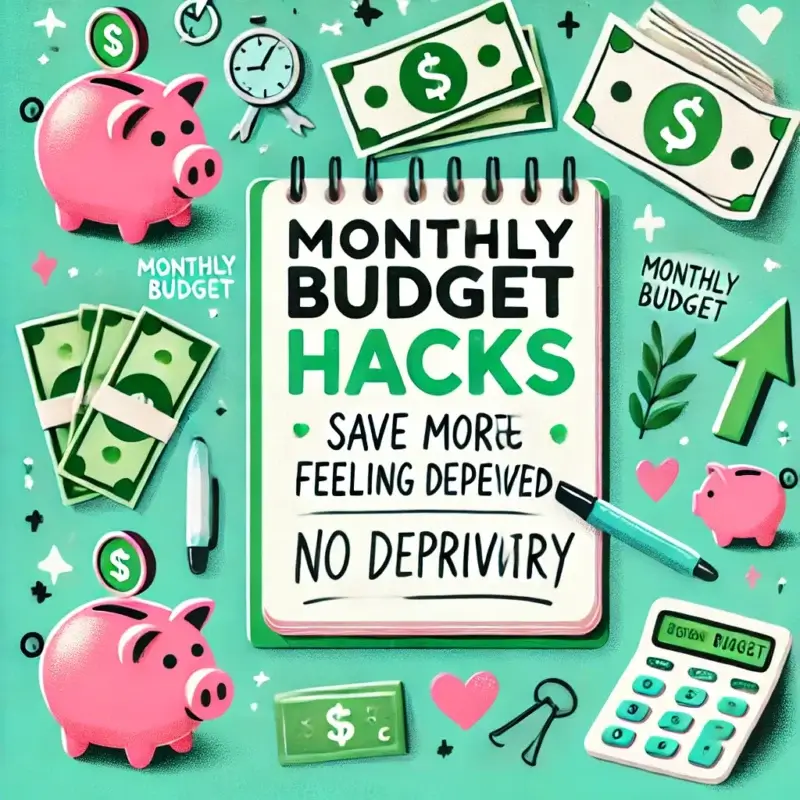Monthly Budget Hacks: How to Save More Without Feeling Deprived
Understanding Your Current Financial Situation
Before embarking on a journey toward more effective budgeting, it is crucial to have a comprehensive understanding of your current financial situation. This entails not only tracking your income and expenses but also delving deeper into your spending patterns. Begin by meticulously documenting all sources of income, including salaries, bonuses, and any side hustles. This will establish a baseline for your financial capabilities.
Next, track your expenses over a month or two. Categorizing these expenses into fixed (rent, utilities, subscriptions) and variable (groceries, dining out, entertainment) helps in painting a more precise financial picture. Many people are surprised to discover where their money is going and may identify unnecessary expenditures. This identification is essential, as it allows individuals to recognize areas where they can cut costs without feeling deprived.
In addition to understanding where your money is spent, analyzing spending patterns can shed light on consistent habits that may require adjustment. For example, frequent impulse purchases or habitual late-night takeout can be highlighted as areas that, if modified, could lead to significant savings. This reflection serves not just a financial purpose but also a psychological one. By acknowledging these behaviors, you can mitigate the feelings of restriction often associated with budgeting.
Recognizing one’s financial landscape fosters a sense of control, reducing anxiety related to various expenses and making it easier to approach budgeting as a means of empowerment rather than deprivation. Once a clear picture of your finances is established, you are well-equipped to create a budget that is feasible and sustainable. This awareness serves as a foundation for discovering effective budget hacks that can lead to real savings while maintaining a comfortable lifestyle.
Setting Realistic Goals for Savings
Establishing effective savings goals is an essential component of financial planning. By setting realistic savings objectives, individuals can create a motivational framework that encourages positive money management habits rather than induces feelings of deprivation. One effective method for setting potential goals is the SMART criteria: Specific, Measurable, Achievable, Relevant, and Time-bound.
When savings goals are Specific, they clearly outline what one intends to achieve. For instance, instead of saying “I want to save money,” specify an amount, like “I want to save $1,200 for a vacation.” Goals should also be Measurable, allowing individuals to track their progress. This might involve breaking down the total savings into monthly targets, such as saving $100 each month to reach the goal within a year.
Furthermore, it’s important for savings objectives to be Achievable. Setting a goal of saving $10,000 in a month may be unrealistic for someone with a modest income. Evaluating personal finances helps in determining what is attainable while still being motivating. The goal should also be Relevant, meaning it resonates with an individual’s values and life priorities. For example, if family travel is a priority, saving for a family trip aligns well with personal values.
Lastly, the goal needs to be Time-bound. Establishing a timeframe encourages the discipline necessary for meeting savings objectives. A well-defined deadline, like saving $600 for a new appliance in six months, emphasizes urgency and keeps motivation high. By adopting this structured approach to goal-setting, individuals can form meaningful and actionable savings strategies. This not only makes the process fulfilling but also reinforces a sustainable habit of saving as opposed to viewing it as a mere sacrifice.
Creative Budgeting Techniques to Maximize Savings
Effective budgeting is essential for maximizing savings, allowing individuals to meet their financial goals without feeling deprived. One popular method is the ’50/30/20 Rule’. This technique encourages individuals to allocate 50% of their income to needs, such as housing and groceries, 30% to wants, such as entertainment and travel, and 20% to savings and debt repayment. By providing a clear structure, this rule helps in maintaining a balanced financial lifestyle and ensures that individuals can enjoy life while still saving for the future.
Another innovative approach is the cash envelope system, which involves dividing cash into different envelopes designated for various spending categories. For instance, one envelope may be dedicated to groceries, while another is for dining out. This method imposes a physical limit on spending, making it easier to track expenses and curtail unnecessary purchases. The tactile nature of managing cash can also enhance the budgeting experience, transforming it into an engaging and rewarding process.
The ‘No-Spend Challenge’ encourages individuals to practice mindful spending by limiting expenses for a set period, often a week or a month. Participants commit to not spending money on non-essential items during this time, which can lead to significant insights into one’s spending habits. After the challenge, many people report increased awareness of their purchasing decisions, creating a lasting impact on how they view money and spending.
Adapting these methods to fit individual lifestyles is crucial. For instance, individuals who enjoy dining out can set aside a specific budget for monthly restaurant visits, ensuring enjoyment while adhering to their overall financial goals. By implementing these creative budgeting techniques, it is possible to save more without feeling restricted, promoting a healthier financial outlook that still allows for personal enjoyment and fulfillment.
Incorporating Mindfulness and Positive Spending Habits
In the context of monthly budgeting, the integration of mindfulness can significantly enhance one’s financial decision-making process. Mindfulness encourages individuals to remain present and engaged with their spending habits rather than making impulsive purchases driven by emotional triggers. By adopting a more conscious approach to spending, individuals can better align their expenditures with their financial goals, thus reinforcing their budgeting efforts.
One effective strategy is to identify emotional triggers that lead to unplanned spending. For instance, stress, boredom, or the desire for social validation can compel individuals to make unnecessary purchases. By being aware of these triggers, you can develop coping mechanisms that divert attention from compulsive buying, ultimately achieving a more balanced financial life. Journaling about spending experiences not only helps in identifying these triggers but also cultivates a reflective practice that enhances financial mindfulness.
Another compelling method to instill mindfulness into your budget is through gratitude journaling, wherein you reflect on your expenses. This practice fosters a sense of appreciation for what you have, minimizing the tendency to focus on what you lack. When expenditures are acknowledged in a gratitude journal, individuals are more likely to view their purchases through a lens of informed positivity—recognizing how their spending aligns with their values and needs rather than succumbing to fleeting desires.
Additionally, developing positive spending habits is crucial in making mindful financial decisions. This can involve establishing a clear distinction between needs and wants, allowing individuals to prioritize essential expenses over discretionary ones. By implementing such techniques, individuals can ultimately create a sustainable approach to budgeting that feels empowering rather than restrictive, paving the way for healthier financial behaviors without the sensation of deprivation.

